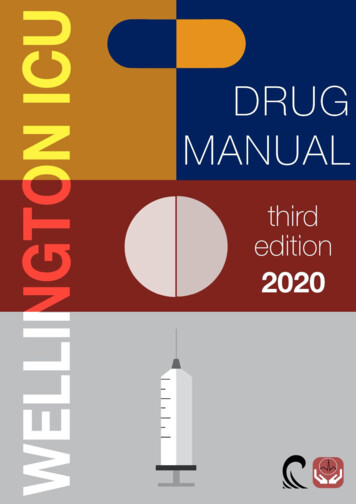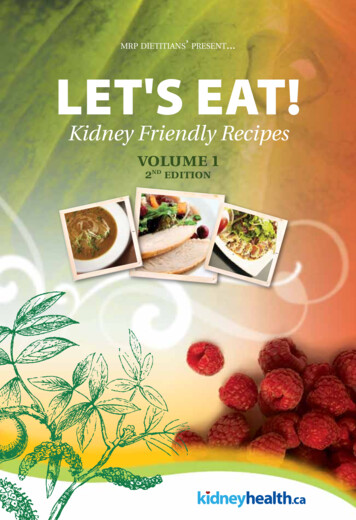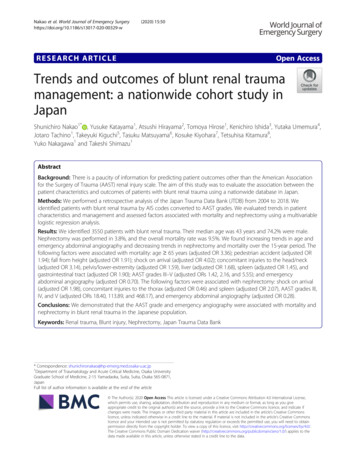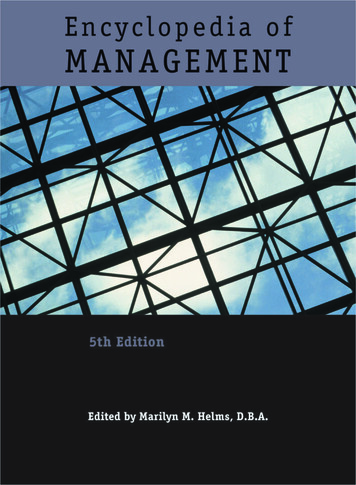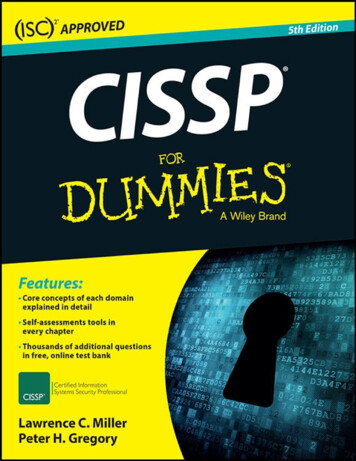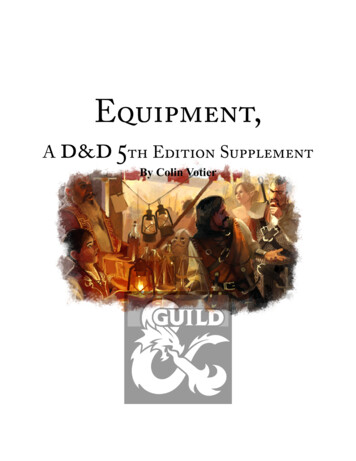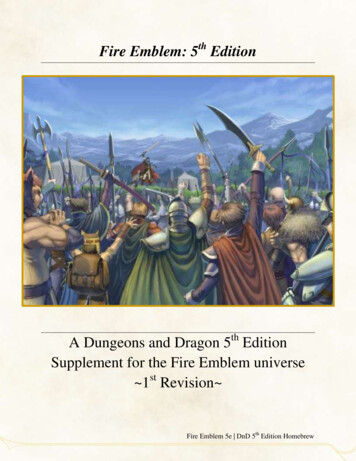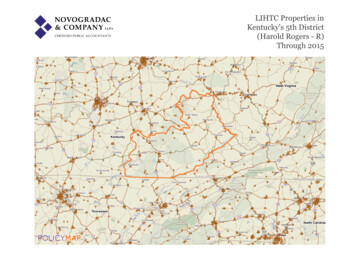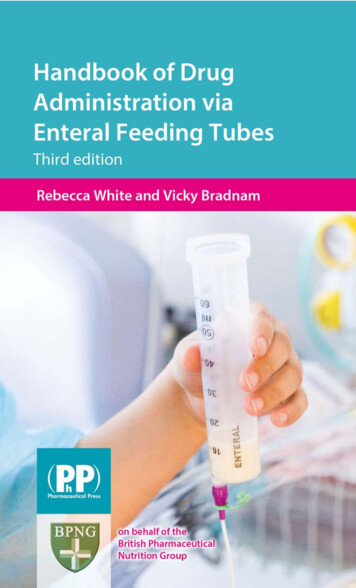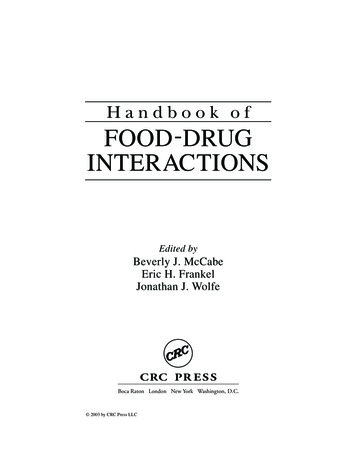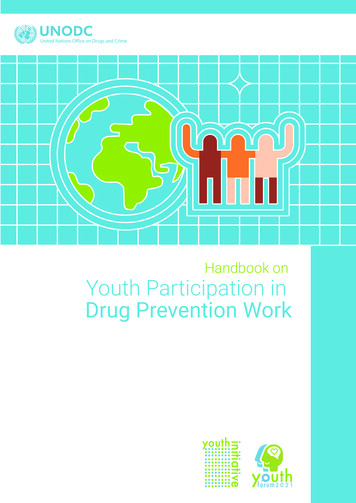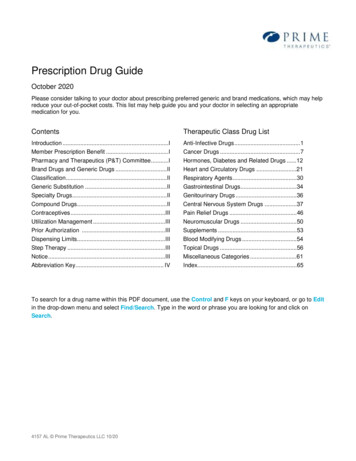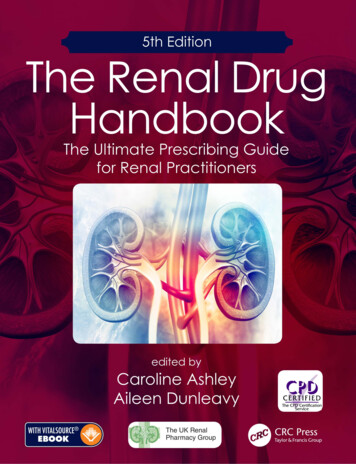
Transcription
The Renal DrugHandbookThe Ultimate Prescribing Guidefor Renal Practitioners5th EditionEdited byCaroline Ashley and Aileen DunleavyUK Renal Pharmacy GroupForeword byProfessor Sir John CunninghamProfessor of NephrologyUniversity College LondonBoca Raton London New YorkCRC Press is an imprint of theTaylor & Francis Group, an informa business
CRC PressTaylor & Francis Group6000 Broken Sound Parkway NW, Suite 300Boca Raton, FL 33487-2742 2019 by Taylor & Francis Group, LLCCRC Press is an imprint of Taylor & Francis Group, an Informa businessNo claim to original U.S. Government worksPrinted on acid-free paperInternational Standard Book Number-13: 978-1-138-62479-5 (Hardback)This book contains information obtained from authentic and highly regarded sources. Reasonable efforts have been made to publish reliable data and information, but the author and publisher cannot assume responsibility for the validity of all materials or the consequencesof their use. The authors and publishers have attempted to trace the copyright holders of all material reproduced in this publication andapologize to copyright holders if permission to publish in this form has not been obtained. If any copyright material has not been acknowledged please write and let us know so we may rectify in any future reprint.Except as permitted under U.S. Copyright Law, no part of this book may be reprinted, reproduced, transmitted, or utilized in any form byany electronic, mechanical, or other means, now known or hereafter invented, including photocopying, microfilming, and recording, or inany information storage or retrieval system, without written permission from the publishers.For permission to photocopy or use material electronically from this work, please access www.copyright.com (http://www.copyright.com/) or contact the Copyright Clearance Center, Inc. (CCC), 222 Rosewood Drive, Danvers, MA 01923, 978-750-8400. CCC is a not-forprofit organization that provides licenses and registration for a variety of users. For organizations that have been granted a photocopylicense by the CCC, a separate system of payment has been arranged.Trademark Notice: Product or corporate names may be trademarks or registered trademarks, and are used only for identification andexplanation without intent to infringe.Visit the Taylor & Francis Web site athttp://www.taylorandfrancis.comand the CRC Press Web site athttp://www.crcpress.com
Foreword to the fifth editionThe Renal Drug Handbook has developed into anessential resource for nephrologists, specialist nursesand pharmacists engaged in the care of these patients.As the field moves forward so also do the therapeuticopportunities, and pitfalls. Fortunately successive editionsof the handbook have kept pace with these advances - thepresent Fifth Edition includes over 900 drug monographs,each containing synoptic but important information for thetarget audience. A particularly strong point to this seriesis that, rather than trying to be clever, the authors havestuck with a simple alphabetical organisation which makesfinding one’s way around extremely easy. Having found thedesired entry, the reader is then confronted with a logical,clear and consistently structured body of information onthe relevant drug, including criteria for use, dosing issues inpatients with normal, reduced and severely reduced renalfunction, drug interactions, metabolism, pharmacokineticsand practicalities of administration. It is this combinationof utility and accessibility that enables the Fifth Editionof The Renal Drug Handbook to set an exceptionally highcrossbar. The book will continue to be available onlineand for this Fifth Edition will be also downloadable tosmartphones. There really is nothing else quite like it.Professor Sir John CunninghamProfessor of Nephrology, University College LondonApril 2018iii
PrefaceWelcome to the fifth edition of The Renal Drug Handbook.The information contained in this book has been compiledfrom a wide range of sources and from the clinical experienceof the editorial board of the UK Renal Pharmacy Group,all of whom are involved in the pharmaceutical care ofrenally-impaired patients. As such, some of the informationcontained in the monographs may not be in accordance withthe licensed indications or use of the drug.The Handbook aims to: provide healthcare professionals with a singlereference of easily retrievable, practical informationrelating to drug use, sourced from the practicalexperience of renal units throughout the UK. Byreferring to the monographs, the user is guidedin how to prescribe, prepare and administer thedrug with due regard to potentially serious druginteractions and to any renal replacement therapy thepatient may be undergoing provide a practice-based review of drug utilisation inrenal units across the UK indicating, where appropriate,any local methods of use, licensed or otherwise.In recent years, the classification for chronic kidneydisease (CKD) has changed, now being described as CKDstages 1–5. Each stage is defined by the patient’s eGFR(or estimated GFR) which is calculated using the MDRD(modification of diet in renal disease) equation. One pointto note is that the eGFR is normalised to a standard bodysurface area of 1.73 m2. There is relatively good correlationbetween the two equations for calculating renal function inpatients of average weight, and either could be used for themajority of drugs. However, eGFR should not be used forcalculating drug doses in patients at extremes of body weightnor for drugs with a narrow therapeutic window unless itis first corrected to the actual GFR for that patient. ActualGFR can be calculated from the following equation:Actual GFR (eGFR BSA/1.73)At extremes of body weight neither the MDRD northe Cockcroft-Gault equation is particularly accurate. If anaccurate GFR is required, e.g. for chemotherapy, then anisotope GFR determination should be performed.The information on dosage adjustments in renalimpairment given in this book is based on Cockcroft-Gaultcreatinine clearance and not eGFR, since the majority ofivpublished information available is based on creatinineclearance.The Handbook is not intended to offer definitive adviceor guidance on how drugs should be used in patients withrenal impairment, nor is it a comprehensive and completelist of all drugs licensed in the UK.The range of drugs covered will continue to grow withsubsequent editions. The Handbook is not a guide todiagnosis nor to a drug’s side-effect profile, except whereadverse drug events are more pronounced in the presenceof renal impairment. For more in-depth information,users are advised to refer to the Summary of ProductCharacteristics, the British National Formulary, packageinserts or other product data.The use of drugs in patients with impaired renalfunction can give rise to problems for several reasons: Altered pharmacokinetics of some drugs, i.e. changesin absorption, tissue distribution, extent of plasmaprotein binding, metabolism and excretion. In renalimpairment these parameters are often variableand interrelated in a complex manner. This may befurther complicated if the patient is undergoing renalreplacement therapy. For many drugs, some or even all, of the alteredpharmacokinetic parameters and modifiedinterrelationships are unknown. In suchcircumstances, the informed professional judgementof clinicians and pharmacists must be used to predictdrug disposition. This must be based on knowledgeof the drug, its class, chemistry and pharmacokineticsin patients with normal renal function. Sensitivity to some drugs is increased, even ifelimination is unimpaired. Many side-effects are particularly poorly tolerated byrenally impaired patients. Some drugs are ineffective when renal function isreduced. Renal function generally declines with age, and manyelderly patients have a GFR less than 50 mL/minwhich, because of reduced muscle mass, may not bereflected by an elevated creatinine. Consequently, onecan justifiably assume mild renal impairment whenprescribing for the elderly.Many of these problems can be avoided by carefulchoice and use of drugs. This Handbook seeks to assisthealthcare professionals in this process.
Preface vUsing the monographs Drug name: The approved (generic) name is usuallystated. Clinical use: A brief account of the more commonindications in renally impaired patients is given.Where an indication or route is unlicensed, this isusually stated. Dose in normal renal function: The doses quotedfor patients with normal renal function are generallythe licensed dosage recommendations stated in theSummary of Product Characteristics for each drug.Where a product is not licensed in the UK, dosageguidelines are provided by the relevant drug company. Pharmacokinetics: Basic pharmacokinetic data suchas molecular weight, half-life, percentage proteinbinding, volume of distribution and percentageexcreted unchanged in the urine are quoted, to assistin predicting drug handling in both renal impairmentand renal replacement therapy. Metabolism: Very few drugs are 100% excreted viaeither the liver or the kidneys. Many are metabolisedby the liver to either active or inactive metabolites,and some of these may be excreted via the kidneys.Pharmacologically active metabolites that undergorenal excretion must be considered when prescribingthe parent drug in patients with renal impairment. Dose in renal impairment: The level of renalfunction below which the dose of a drug must bereduced depends largely on the extent of renalmetabolism and elimination, and on the drug’stoxicity. Most drugs are relatively well tolerated, havea broad therapeutic index or are metabolised andexcreted hepatically, so precise dose modification isunnecessary. In such cases, the user is instructed to‘dose as in normal renal function’.For renally excreted drugs with a narrow therapeuticindex, the total daily maintenance dose may be reduced eitherby decreasing the dose or by increasing the dosing interval, orsometimes by a combination of both. Dosing guidelines forvarying degrees of renal impairment are stated accordingly. Dose in renal replacement therapy: Details aregiven for dosing in automated peritoneal dialysis/continuous ambulatory peritoneal dialysis (APD/CAPD), intermittent haemodialysis (HD),intermittent haemodiafiltration (HDF), continuousvenovenous haemodialysis/haemodiafiltration(CVV HD/HDF), and continuous arteriovenoushaemodialysis/haemodiafiltration (CAV HD/HDF), where known. Drugs are categorised intodialysable/not dialysable/dialysability unknown,to aid the practitioner in making an informeddecision for dosing within a particular form of renalreplacement therapy. Only a few specific guidelinesare given for dosing in continuous arteriovenous/venovenous haemofiltration (CAV/VVH). Ingeneral, dosing schedules are the same as thosequoted for CAV/VVHD, although it shouldbe borne in mind that CAV/VVH may have alower drug clearance capacity. Thus the clinicianor pharmacist should use informed professionaljudgement, based on knowledge of the drug and itspharmacokinetics, when deciding whether to furthermodify dosing regimens.It should be noted that HDF removes drugs moreefficiently than HD, although there is limited informationin this area. Important drug interactions: The interactions listedare those identified by a black spot in Appendix 1of the British National Formulary. They are definedas those interactions which are potentially serious,and where combined administration of the drugsinvolved should be avoided, or only undertaken withcaution and appropriate monitoring. Users of themonographs are referred to Appendix 1 of the BritishNational Formulary for a more comprehensive list ofinteractions deemed to be not so clinically significant. Administration: Information is given onreconstitution, route and rate of administration,and other relevant factors. Much of the informationrelates to local practice, including information onthe minimum volume that drugs can be added to.Only the most commonly used and compatiblereconstitution and dilution solutions are stated. Theproduct literature should always be consulted for themost up to date information. Other information: Details given here are onlyrelevant to the use of that particular drug in patientswith impaired renal function or on renal replacementtherapy. For more general information, please refer tothe Summary of Product Characteristics for that drug.Your contribution to future editions is vital. Any ideas,comments, corrections, requests, additions, local practices,etc. on the drugs in the Handbook should be put in writingto the Editors-in-Chief: Caroline Ashley, PharmacyDepartment, Royal Free Hospital, Hampstead, LondonNW3 2QG or Aileen Dunleavy, Pharmacy Department,Crosshouse Hospital, Kilmarnock KA2 0BE.Caroline AshleyAileen DunleavyMarch 2018
The following texts have been used as reference sources forthe compilation of the monographs in this book:electronic Medicines Compendium www.medicines.org.uk/emcBritish National Formulary 73rd ed. PharmaceuticalPress; 2017.Sweetman SC. Martindale: The Complete DrugReference. 39th ed. Pharmaceutical Press; 2017.Accessed via http://www.knowledge.scot.nhs.ukBennett WM, et al. Drug Prescribing in Renal Failure:Dosing guidelines for adults. 5th ed. AmericanCollege of Physicians; 2007.Drug Information Handbook. 22nd ed. Lexicomp;American Pharmacists Association; 2013Knoben JE, Anderson PO. Clinical Drug Handbook.7th ed. Drug Intelligence Publications Inc.; 1993.viSchrier RW, Gambertoglio JG. Handbook of DrugTherapy in Liver and Kidney Disease. Little,Brown and Co.; 1991.Dollery C. Therapeutic Drugs. 2nd ed. ChurchillLivingstone; 1999.Seyffart G. Drug Dosage in Renal Insufficiency.Kluwer Academic Publishers; 1991.Cyclosporin Interaction File (NovartisPharmaceuticals UK).Drugdex Database. Micromedex 2.0 Inc., USA.Drug company inescomplete.comhttp://www.drugban
The Renal Drug Handbook has developed into an essential resource for nephrologists, specialist nurses and pharmacists engaged in the care of these patients. As the field moves forward so also do the therapeutic opportunities, and pitfalls. Fortunately successive editions of the handbook have kept pace with these advances - the present Fifth Edition includes over 900 drug monographs, each .
